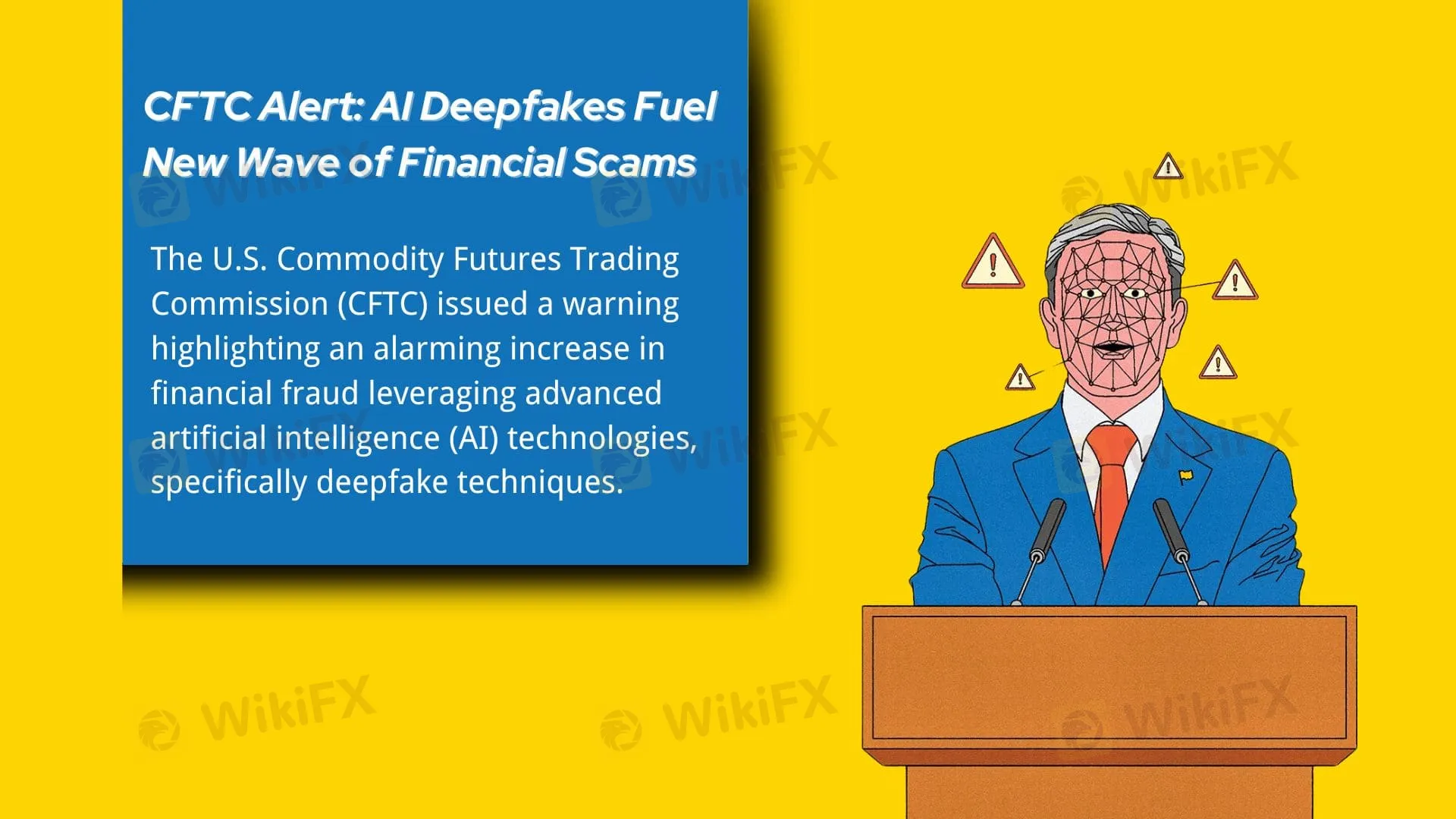简体中文
繁體中文
English
Pусский
日本語
ภาษาไทย
Tiếng Việt
Bahasa Indonesia
Español
हिन्दी
Filippiiniläinen
Français
Deutsch
Português
Türkçe
한국어
العربية
CFTC Alert: AI Deepfakes Fuel New Wave of Financial Scams
Extracto:Think seeing is believing? AI scams challenge your reality and put your finances at risk.

The U.S. Commodity Futures Trading Commission (CFTC) issued a warning highlighting an alarming increase in financial fraud leveraging advanced artificial intelligence (AI) technologies, specifically deepfake techniques.
According to recent data from the Federal Trade Commission (FTC), AI-generated scams have surged dramatically since early 2025, with financial losses already exceeding $350 million in just the first two months of the year. Scammers utilize deepfake videos, audio clips, and sophisticated online personas to convincingly impersonate legitimate financial advisors and government officials.

In one high-profile case from February 2025, a deepfake impersonating a prominent financial analyst conducted live-streamed webinars, defrauding over 150 investors of nearly $12 million in a fake cryptocurrency investment scheme. Victims reported difficulty distinguishing the deepfake presenter from the real analyst, as the AI-generated visuals and speech were remarkably realistic.
Melanie Devoe, Director of CFTC's Office of Customer Education and Outreach, emphasized, “The realism of these AI-driven scams is unprecedented, making them harder than ever to detect. Investors must verify all identities and be extremely cautious before sending money.”
The CFTC advises the public to watch for common signs of AI-driven fraud, including:
- Unexpected financial offers or requests online
- Sudden changes in voice, appearance, or behavior during video calls
- Refusal to engage in direct, face-to-face meetings
To further combat this threat, the CFTC is collaborating with technology companies and other regulatory bodies to develop tools that can detect AI-generated fraud effectively.
Descargo de responsabilidad:
Las opiniones de este artículo solo representan las opiniones personales del autor y no constituyen un consejo de inversión para esta plataforma. Esta plataforma no garantiza la precisión, integridad y actualidad de la información del artículo, ni es responsable de ninguna pérdida causada por el uso o la confianza en la información del artículo.
Brokers de WikiFX
Cálculo de tasa de cambio


